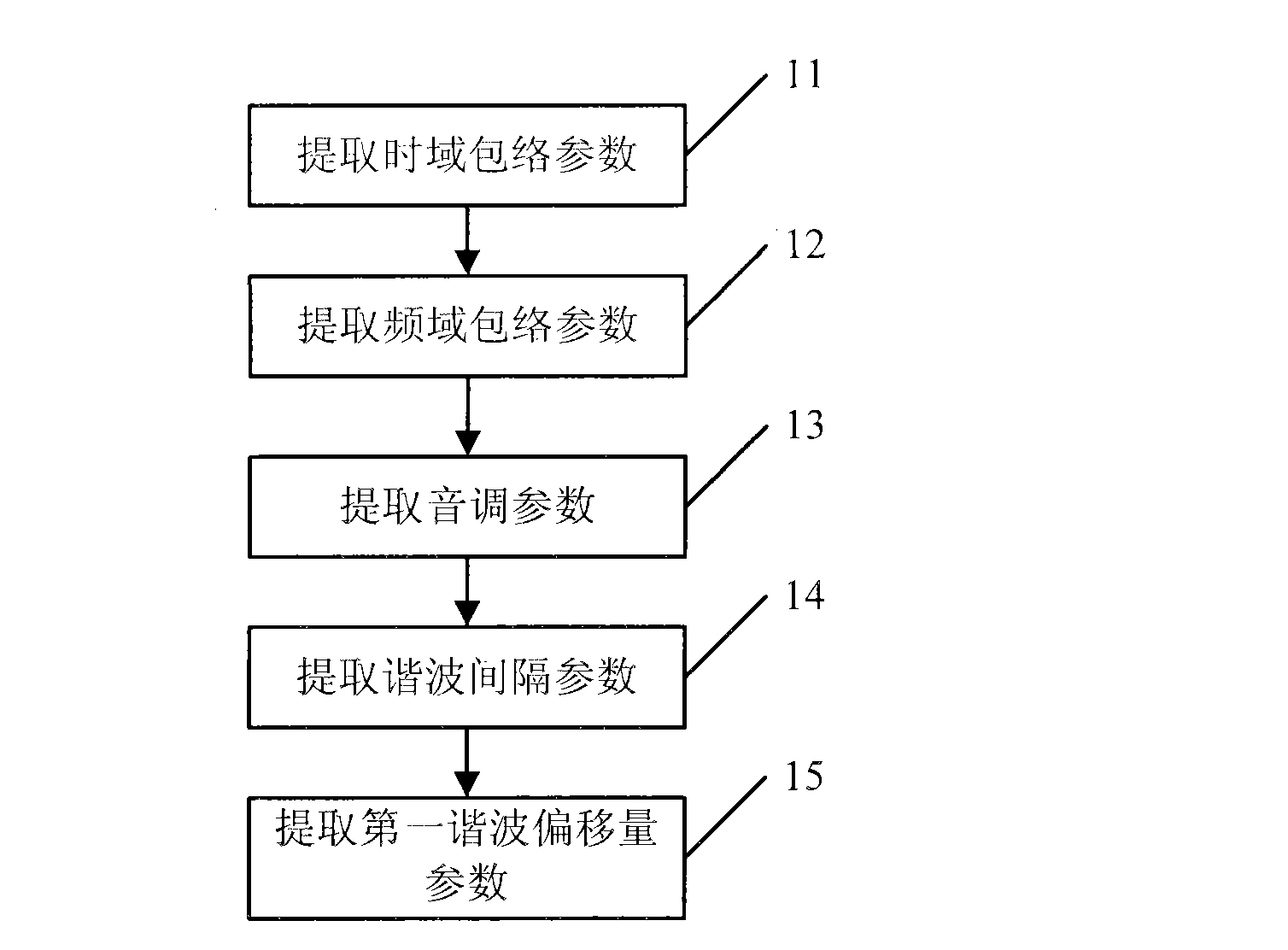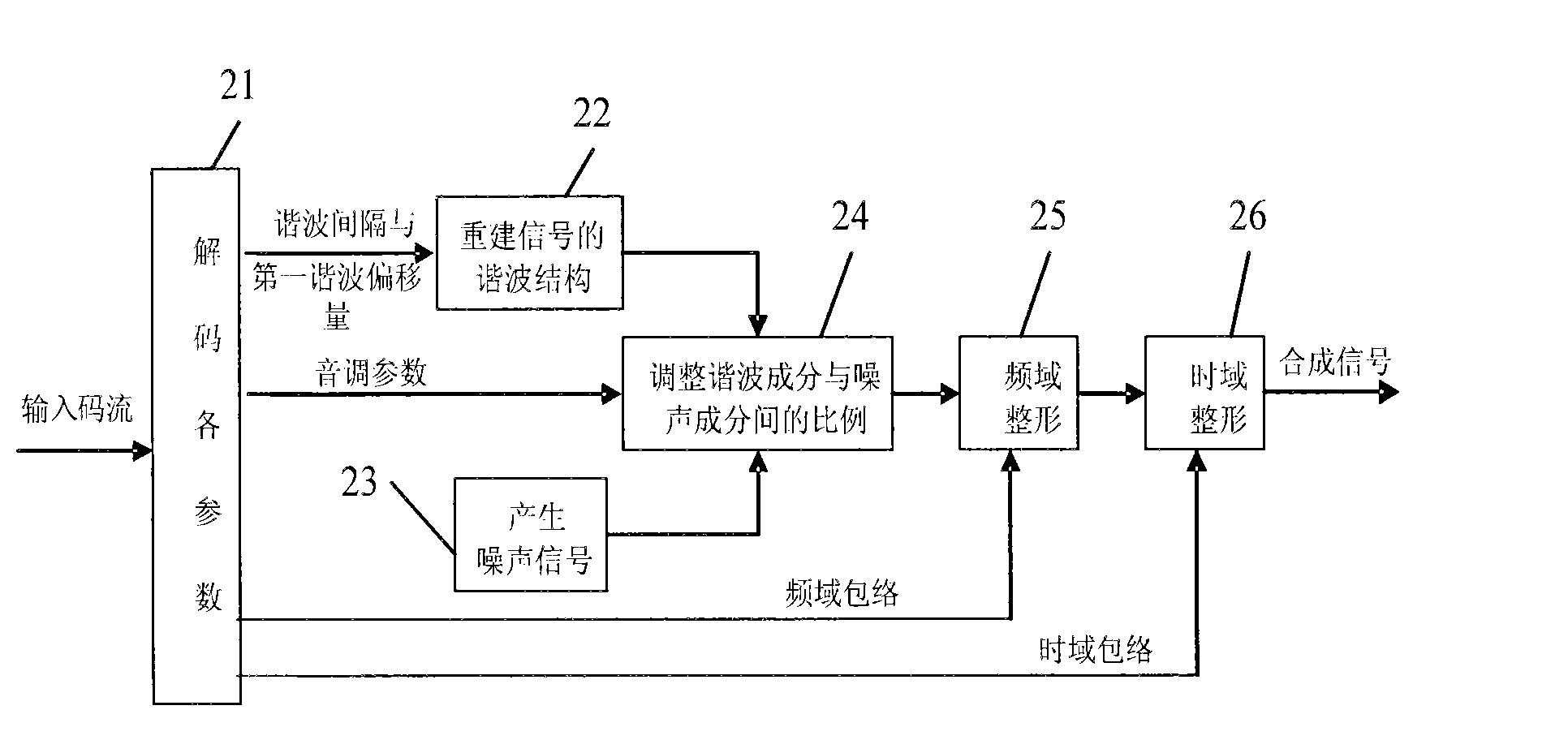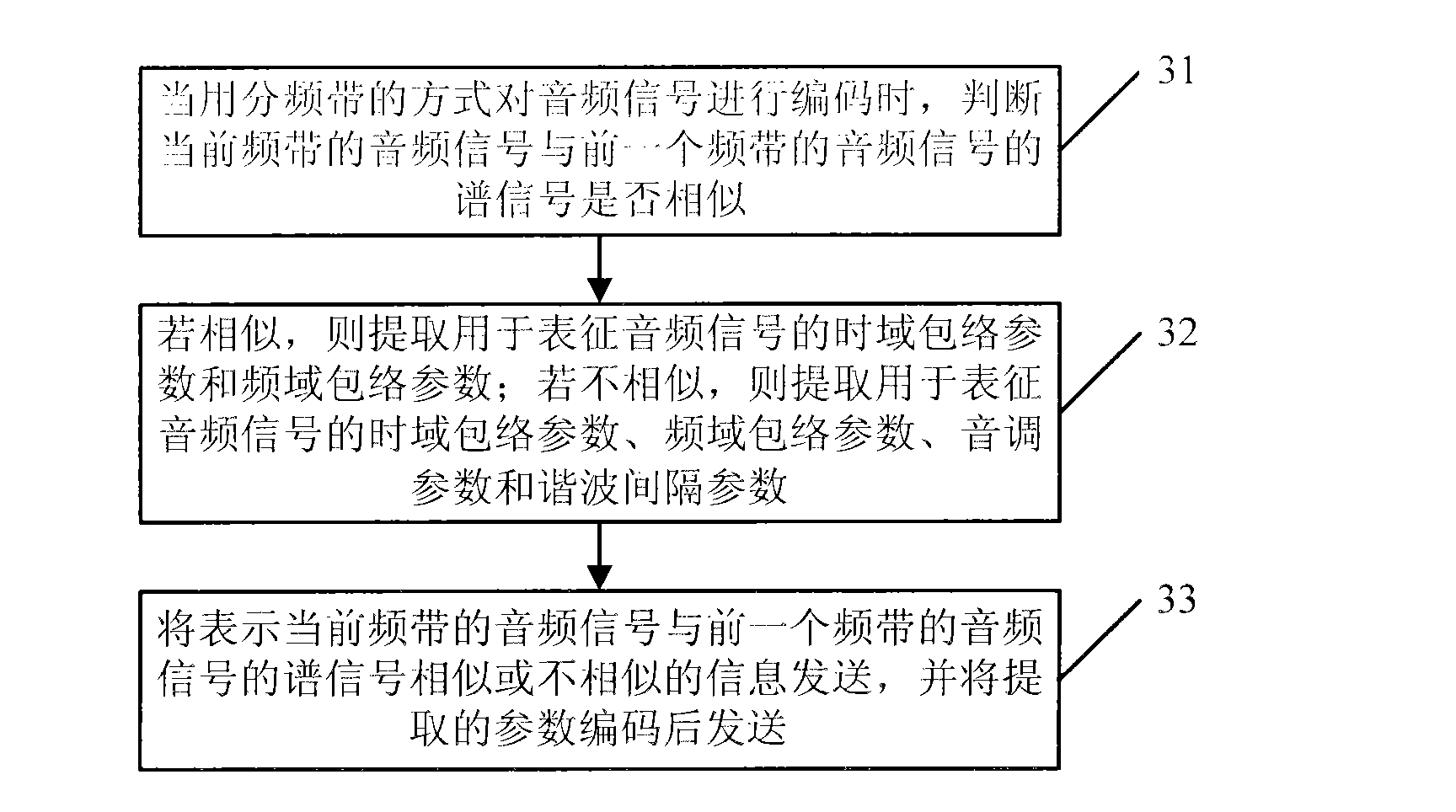Method, device and system for encoding and decoding audios
An audio encoding and encoding technology, which is applied in the fields of decoding and audio encoding, can solve problems affecting audio quality and the number of bits, and achieve the effect of reducing the number of bits and the number of parameters
- Summary
- Abstract
- Description
- Claims
- Application Information
AI Technical Summary
Problems solved by technology
Method used
Image
Examples
Embodiment 1
[0079] In this embodiment, the encoder extracts the time-domain envelope parameters, frequency-domain envelope parameters, pitch parameters and harmonic interval parameters of the audio signal respectively. Since the harmonic interval of the audio signal and the first harmonic deviation The offset parameters are the same, so the step of extracting the first harmonic offset parameter is omitted; after receiving the above parameters, the decoder performs decoding according to the above parameters to obtain a synthesized audio signal.
[0080] The implementation process at the encoding end may specifically include:
[0081] (1): Extract the time-domain envelope parameters of the signal: For example, by calculating the sub-frame energy of the audio signal to obtain the time-domain envelope parameters of the signal, the sub-frame energy envelope {temp_env(0), temp( 1),..., temp(N-1)}, where N is the number of subframes, if the frame length is 15ms, and the subframe length is 3ms, t...
Embodiment 2
[0130]In this embodiment, the input audio signal is divided into a high frequency band signal and a low frequency band signal at the encoding end, and encoding processing is performed on the high frequency band signal and the low frequency band signal respectively.
[0131] Figure 5 It is a schematic diagram of the processing process at the encoding end in Embodiment 2 of the present invention, such as Figure 5 As shown, the encoding process includes:
[0132] 51: Filter and analyze the input audio signal; set the sampling rate of the input audio signal to 32KHz, and the processing frame length is 20ms; after the input signal is divided into frequency bands and down-sampled, the signals corresponding to the 0~8kHz frequency band are 320 sampling points, corresponding to 8~16kHz frequency band signal has 320 sampling points;
[0133] 52: Signals in the 0~8kHz frequency band are coded by core codes. In specific applications, core codes can be completed by G.729.1 codecs or b...
Embodiment 3
[0164] Compared with Embodiment 2, which adopts the method of first extracting the time domain envelope parameters and then extracting the frequency domain envelope parameters, Embodiment 3 adopts the method of first extracting the frequency domain envelope parameters to realize encoding (using the audio frequency domain in Embodiment 3) The signal and frequency division method are the same as those in Embodiment 2 as an example).
[0165] In this embodiment, the process of processing the high frequency band signal at the encoding end may specifically include:
[0166] (1): Determine the encoding mode parameter CM according to the method in (1) of the encoding end in Embodiment 2;
[0167] (2): The time domain signal in the 8~16kHz frequency band is transformed by MDCT to obtain a set of MDCT coefficients. Since the ultra-wideband part only processes the signal in the 8~14kHz frequency band, only {y_swb(0) is processed for the frequency domain signal , y_swb(1),...,y_swb(239)...
PUM
 Login to View More
Login to View More Abstract
Description
Claims
Application Information
 Login to View More
Login to View More - R&D
- Intellectual Property
- Life Sciences
- Materials
- Tech Scout
- Unparalleled Data Quality
- Higher Quality Content
- 60% Fewer Hallucinations
Browse by: Latest US Patents, China's latest patents, Technical Efficacy Thesaurus, Application Domain, Technology Topic, Popular Technical Reports.
© 2025 PatSnap. All rights reserved.Legal|Privacy policy|Modern Slavery Act Transparency Statement|Sitemap|About US| Contact US: help@patsnap.com



